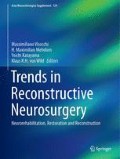Abstract
The ReAbility Project is a solution that provides an alternative to wheelchair mobility for people with serious disabilities of the lower limbs, such as paraplegics, allowing them to stand and walk once again. This solution is achieved by utilizing an instrument called an “exoskeleton”.
The ReAbility device is a robotic-assisted system designed to improve the quality of life of people with a movement disability and/or reduced movement; it is meant both for daily domestic use and for rehabilitation therapy in hospitals and rehabilitation centers.
The principal characteristics of the device are its modularity, manageability, and wearability for the patient, who is actively involved and has full control of all the movement functions. Its light weight (16 kg) renders it easy to wear for the patient and competitive on the market. From an esthetic perspective it can be worn under clothes, with obvious and important psychological and social advantages. Its cost is also well contained.
With the use of this device, there is also a very real positive effect on healthcare costs.
Access this chapter
Tax calculation will be finalised at checkout
Purchases are for personal use only
References
International Perspectives on Spinal Cord Injury WHO Report (2013) http://www.paraplegiker-stiftung.ch/files/pdf4/SPF_WHO-Bericht-Querschnittlahmung_I.pdf . Accessed 3 Dec 2013
Corriere della sera (2014) http://www.corriere.it/salute/disabilita/14_giugno_03/mondiali-ragazzo-tetraplegico-7eabea18-eb11-11e3-9008-a2f40d753542.shtml. Accessed 3 June 2014
Scivoletto G, Di Lucente L, Fuoco U, Di Donna V, Laurenza L, Macellari V, Giacomozzi C, Molinari M (2008) Riabilitazione e valutazione dei pazienti mielolesi: l’esperienza della Fondazione S. Lucia di Roma. Istituto Superiore di Sanità, Roma, Rapporti ISTISAN 08/39
Conflict of Interest Statement
The authors declare that they have no conflict of interest.
Author information
Authors and Affiliations
Corresponding author
Editor information
Editors and Affiliations
Rights and permissions
Copyright information
© 2017 Springer International Publishing Switzerland
About this paper
Cite this paper
Previtera, B., Jovine, C., Visocchi, M. (2017). ReAbility: Complex External Prosthesis Systems to Rehabilitate Movement. In: Visocchi, M., Mehdorn, H.M., Katayama, Y., von Wild, K.R.H. (eds) Trends in Reconstructive Neurosurgery. Acta Neurochirurgica Supplement, vol 124. Springer, Cham. https://doi.org/10.1007/978-3-319-39546-3_32
Download citation
DOI: https://doi.org/10.1007/978-3-319-39546-3_32
Publisher Name: Springer, Cham
Print ISBN: 978-3-319-39545-6
Online ISBN: 978-3-319-39546-3
eBook Packages: MedicineMedicine (R0)

